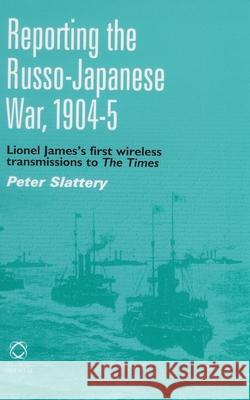Reporting the Russo-Japanese War, 1904-5: Lionel James's First Wireless Transmission to the Times » książka
Reporting the Russo-Japanese War, 1904-5: Lionel James's First Wireless Transmission to the Times
ISBN-13: 9781901903577 / Angielski / Twarda / 2004 / 170 str.
Reporting the Russo-Japanese War, 1904-5: Lionel James's First Wireless Transmission to the Times
ISBN-13: 9781901903577 / Angielski / Twarda / 2004 / 170 str.
(netto: 290,70 VAT: 5%)
Najniższa cena z 30 dni: 305,95
ok. 30 dni roboczych
Dostawa w 2026 r.
Darmowa dostawa!
Large numbers of British military and naval officers as well as journalists and others observed the Russo-Japanese War from close quarters. But there was one journalist in particular, the Times' correspondent, Lionel James, who made war-reporting history by gaining access to the conflict zone of the war at sea and reporting by wireless from a specially chartered ship as the action happened. The full details of this remarkable and highly dangerous exploit have been carefully pieced together from official Times records and other sources by Peter Slattery and recorded here for the first time, including the story of how the vital 180-foot timber wireless mast was built on the British-leased tree-less promontory of Weihaiwei on the China coast. James's first report was published in The Times on 15 March 1904; he subsequently went on to file many other despatches, including the sinking of the Russian flag-ship the Petropavlovsk. The World Powers, however, were not ready to accept that a mere journalist should be allowed to exploit the new wireless technology to gain reporting advantage and forced James to give up, causing him to move inland into Manchuria to continue his reporting of the war. From there, he was to send a 5000-word story on one of the major land battles of the war at Liaoyang - the longest cable ever filed. There was also the matter of James' special deal with the Japanese Imperial Navy, which only now has come to light.











